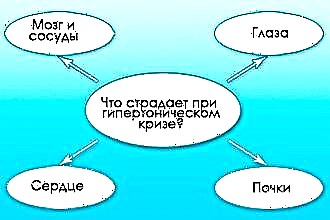There are various forms of hearing impairment, but one of the most unpleasant is the occurrence of ear noises, which constantly bother the patient. The appearance of complaints of tinnitus in the elderly is often perceived as a classic manifestation of age-related changes, which is difficult to argue with. However, we must not forget: the older a person is, the less tolerance to physical activity becomes. The need for quality sleep and rest is increasing - creating conditions for this cannot be achieved in the presence of constant ear noise. The named symptom can speak of presbycusis - the pathology requires immediate complex treatment to alleviate the patient's condition.
Noise and senile hearing loss
 "Describe the tinnitus - is it constantly or intermittently?" This is one of the standard clarifying questions of a doctor, which can be asked to a patient with complaints of unpleasant obsessive sounds without the presence of an external source. Hearing changes in old age have been studied for a long time. Aging is considered the most common cause of hearing loss and background noise. Statistics allow us to be sure that the incidence of presbycusis, or senile hearing loss, is about 40% in the structure of hearing pathology in elderly patients.
"Describe the tinnitus - is it constantly or intermittently?" This is one of the standard clarifying questions of a doctor, which can be asked to a patient with complaints of unpleasant obsessive sounds without the presence of an external source. Hearing changes in old age have been studied for a long time. Aging is considered the most common cause of hearing loss and background noise. Statistics allow us to be sure that the incidence of presbycusis, or senile hearing loss, is about 40% in the structure of hearing pathology in elderly patients.
The causes of persistent tinnitus may be related to:
- With vascular atrophy.
- With atherosclerosis of the vessels of the brain.
- With the influence of external noise (including professional).
- With degenerative-dystrophic changes in the cervical spine.
- With chronic pathologies of the ear structures.
Constant tinnitus is caused by progressive hearing loss of various etiologies.
It should be borne in mind that the noise can be different and not all patients are permanent. Sometimes it has a low tone, is found by patients mainly in a quiet environment and does not occur during a stay in places with a high level of external sound load. It is also possible for the patient to describe a high-frequency noise that bothers continuously. It is worth distinguishing between noise during presbycusis and objective noise caused by vascular pathology. The difference lies not only in the etiology, but also in the fact that in the second case, the "sound background" can be detected by a doctor during an examination using a phonendoscope.
Main reasons
To isolate the only key pathology in an elderly patient is in many cases a difficult task, since during his life he has already formed changes provoked by chronic diseases. Manifestations of dysfunctions of the organ of hearing can be explained by the slow development of a number of pathological processes, about which the patient turns already in the stage of vivid symptoms.
 The term "atrophy" means wasting, impaired function. With age, the number of vessels in the structures of the sound analyzer decreases, atrophy of the spiral ligament, vascular stria, degeneration of the sensorineural elements of the inner ear occurs. Deterioration of blood supply is one of the leading causes of presbycusis, which causes persistent noise in the right ear.
The term "atrophy" means wasting, impaired function. With age, the number of vessels in the structures of the sound analyzer decreases, atrophy of the spiral ligament, vascular stria, degeneration of the sensorineural elements of the inner ear occurs. Deterioration of blood supply is one of the leading causes of presbycusis, which causes persistent noise in the right ear.
In atherosclerosis of the cerebral vessels, hearing impairments accompanied by a "background noise" are caused by:
- the presence of atheromatous masses in the middle ear;
- deposition of neutral fat in the snail;
- atrophic changes in cells of the sensory epithelium.
Ear noise is one of the most persistent manifestations of cerebral atherosclerosis.
The influence of environmental noise is very significant. It is known that the development of occupational hearing loss takes a long time, and only in rare cases, a high level of noise can cause the development of vivid symptoms at the time of exposure. However, the professional "background noise" can really cause the appearance of subjective sound in the ears. At the same time, presbycusis is often detected in patients working in conditions of moderate noise load, but living near industrial facilities, highways. Prolonged contact with auditory stimuli can cause persistent tinnitus and ringing in the ears. The reason is not always clear immediately, since patients tend to look for a connection with obvious damaging factors (inflammatory lesions of the ear structures, trauma, etc.).
Degenerative-dystrophic changes in the cervical spine are a common pathology among elderly patients. It cannot be said that they are the direct cause of the development of senile hearing loss, but they should be considered as one of the key predisposing factors. Disturbances of the blood supply to the labyrinth are of a secondary nature. The manifestation is a constant noise in the ear - and not necessarily bilateral. The genesis of violations can be associated not only with age-related transformations, but also with the consequences of trauma.
 Various chronic pathologies of the ear can provoke the "sound background". These are inflammatory diseases of the outer, middle and inner ear (otitis media), otosclerosis. Presbycusis is caused by biological aging processes, but the presence of chronic dysfunctions of the organ of hearing adversely affects the state of the ear structures. In patients, there is a more rapid onset of changes that contribute to hearing impairment. At the same time, tinnitus is an important symptom that indicates the need to start examination and treatment.
Various chronic pathologies of the ear can provoke the "sound background". These are inflammatory diseases of the outer, middle and inner ear (otitis media), otosclerosis. Presbycusis is caused by biological aging processes, but the presence of chronic dysfunctions of the organ of hearing adversely affects the state of the ear structures. In patients, there is a more rapid onset of changes that contribute to hearing impairment. At the same time, tinnitus is an important symptom that indicates the need to start examination and treatment.
Therapy tactics
The choice of the method of treatment depends on whether the elements of the sound-receiving system have undergone irreversible changes. If this happens, conservative drug therapy is ineffective for affecting the main process, however, it is used to slow the progression of hearing loss and reduce the severity of ear noise.
For the treatment of a patient with presbycusis, the following are used:
- medications;
- hearing correction with hearing aids;
- mechanotherapy, acupuncture and other non-drug methods.
Constant tinnitus in old age requires compulsory treatment. It is necessary to influence the primary disease, since it is impossible to cure the noise directly - this is only a manifestation of pathology, and not always the only one. Drugs are used that have an effect:
- Detoxifying.
- Dehydration.
- Hyposensitizing.
 Medicines are also needed to improve the blood supply to the snail and the processes of tissue metabolism. In general, Platyphyllin, Drotaverin, Cavinton, Aloe extract, B vitamins can be included in the therapy regimen.
Medicines are also needed to improve the blood supply to the snail and the processes of tissue metabolism. In general, Platyphyllin, Drotaverin, Cavinton, Aloe extract, B vitamins can be included in the therapy regimen.
The use of nicotinic acid has a beneficial effect, which helps to reduce the severity of manifestations of subjective noise. The drugs are prescribed for a course of treatment in tablet or injectable form. The use of hearing aids improves the recognition of external noise.
This allows you to observe positive changes on the part of the hearing function and to correct the phenomenon of "background noise". The patient should be trained in the technique of using the apparatus.
Do not use the device for a long time immediately after selection.
The patient needs to remember the importance of the adaptation period.In old age, loud sounds after a prolonged increase in hearing loss are perceived extremely sharply, therefore, you should adjust the volume of the device, wear it in the first days for no more than half an hour.
Blowing out of the auditory tubes and pneumomassage of the tympanic membranes are performed during mechanotherapy, which mainly affects the structures of the middle ear. This technique is believed to improve blood flow in the inner ear.
Acupuncture is indicated for varying degrees of hearing loss. Experts say that it can be used to effectively deal with subjective ear noise. Constant noise in the left ear and on the right side after applying the method does not always disappear, however, it does not appear as brightly as before, and bothers the patient less.



